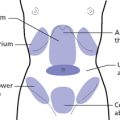 BODY
BODY
INTRODUCTION
Questions about the body concern mostly pain and numbness. Chest and abdomen are discussed in Chapter 38 and limbs in Chapter 39.
ACHES IN THE WHOLE BODY
Symptoms and Signs, Chapter 68
By ‘aches in the whole body’, I refer to aching or pain in most of the joints and muscles; it is not a common symptom. The most important distinction is that according to onset. Aching or pain in the whole body with sudden onset is due to invasion of external Wind and it is therefore accompanied by aversion to cold, shivers, fever and a Floating pulse.
Pain in the arms and shoulders experienced only when walking is due to Liver-Qi stagnation.
Box 37.1 summarizes the patterns underlying aches in the whole body.
PAIN IN THE JOINTS
Symptoms and Signs, Chapter 68
Box 37.2 summarizes the patterns underlying joint pain.
LOWER BACKACHE
Symptoms and Signs, Chapter 67
Box 37.3 summarizes patterns underlying lower backache.
NUMBNESS/TINGLING
Symptoms and Signs, Chapter 68
Box 37.4 summarizes the patterns underlying numbness and tingling of the body.




